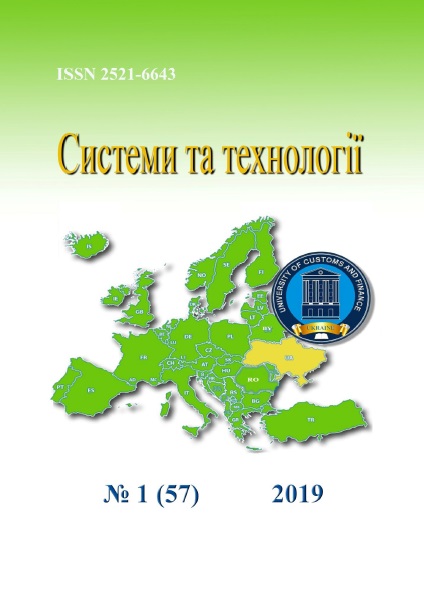Minimization of the waiting time to start performing a radiation monitoring mission via a fleet of unmanned aerial vehicles in the new zone of responsibility
Abstract
The analysis of possible applications of unmanned aerial vehicles for per-forming radiation monitoring missions was carried out. This paper proposes an approach to minimization of the waiting time to start performing a radiation mon-itoring mission via a fleet of unmanned aerial vehicles (hereafter UAVs) in the new zone of responsibility. The approach includes the following steps: distribu-tion of UAVs in the zones of responsibility and setting the time for performing a mission for each UAV; determination of the starting position location where UAVs battery can be replaced; defining the new zone of responsibility and time for performing a mission in the zone; construction of an algorithm for calculating parameters necessary for solving the optimization problem; formulation of the optimization problem and constraints. Parameters to be calculated: the UAV flight time from the current mission zone to: a) starting position; b) a new zone (with making the intermediate landing and without making one); a flight time from the new zone to the starting position; the UAV battery life required for per-forming the mission in the new zone; the waiting time to start performing the mis-sion in the new zone and the current battery life for the UAV at the start of its mission in the new zone for the following cases: a) the UAV reaches the new zone with making the intermediate landing, b) the UAV reaches the new zone without making one. An example of the proposed approach implementation for a fleet, con-sisting of five Ukrainian electric UAVs “Furiia” and performing missions in five zones of responsibility (one UAV performs a mission in one zone) within the Za-porizhzhia NPP thirty-kilometre radius zone is given. Six possible new zones are considered and the waiting time to start performing a mission in each of these zones is given. It has been get that UAV 5, UAV 4 and UAV 2 can be assigned to three zones, two zones and one zone, respectively. UAV 1 and UAV 2 can not be used in any new zone. Note that the UAV 5 can be used once without making the intermediate landing at the starting position for its battery replacement and twice with making the intermediate landing. Further studies should take into account the following cases: the fleet consists of various UAVs, two or more UAVs should be assigned to the new zone.

 ISSN
ISSN 




